Day 1 Shanghai/Beijing/Guangzhou → Addis Ababa ★Departure Day
All day
In the evening, all tourists will gather at Shanghai Pudong International Airport at the designated time (the specific time is as per the tour notice), check in under the guidance of the tour leader, and take the flight to Victoria Falls, a famous tourist city in western Zimbabwe, and transfer to Addis Ababa, the capital of Ethiopia.
Note: If you want to depart from Beijing or Guangzhou, you can get a refund for your international airfare and book your own international flight. We can also assist you in booking but you will need to pay the difference (limited places, please confirm with customer service twice)

Day 2 Addis Ababa → Victoria Falls (Zimbabwe)
All day
International flight from Beijing to Addis Ababa: ET605; 00:10/07:15, flight time: 12 hours and 5 minutes
Guangzhou-Addis Ababa international flight: ET607; 00:10/06:20, flight time 10 hours and 50 minutes
Common connecting flight: International reference flight: ET823 Addis Ababa-Victoria Falls 08:30/12:10 Flight time: 4 hours 40 minutes
The group arrived in Victoria Falls (Zimbabwe), where our guide met us at the airport and began our journey. Victoria Falls is a northwestern border town in Zimbabwe, located on the south bank of the Zambezi River, close to Victoria Falls. The local tourism industry is thriving, attracting visitors from around the world every year to witness the beauty of Victoria Falls.
After our airport pickup, we first headed to Victoria Falls (Zimbabwean side). Named after David Livingstone during his expedition, it's one of the Seven Wonders of the World. At 1,700 meters wide and 100 meters high, it's the world's largest waterfall and a popular spot for rainbows almost daily. After our photoshoot, we headed to the renowned BMW Restaurant for dinner, where we savored a feast of beasts.


3rd Tianjin Zimbabwe → Zambia → Botswana (Kasane)
All day
After breakfast, we'll depart for Zambia. Zambia is a landlocked country in south-central Africa, mostly situated on a plateau. We'll visit the over 100-year-old Victoria Falls Bridge, where you can gaze upon the majestic waterfalls. We'll first visit Victoria Falls (Zambia), one of the world's three largest waterfalls. Victoria Falls is over 1,700 meters wide and reaches a peak of 108 meters, twice as wide and high as Niagara Falls (along with Iguazú Falls and Victoria Falls, known as one of the "Three Great Trans-Nationwide Falls"). It's considered one of the "Seven Wonders of the World." We'll then visit Mukuni Village, a 700-year-old village where British missionary and explorer Livingstone visited in 1855. We'll then explore the village and photograph local life, culture, and performances.
We'll then drive to Botswana, the third country on this itinerary. Botswana is a landlocked nation, bordering South Africa, Namibia, Zambia, and Zimbabwe, all accessible by land. Despite its small size, Botswana offers a wide variety of game viewing opportunities, including hundreds of elephants frolicking along the Chobe River, the Okavango Delta, and its labyrinthine lagoons. We'll check into our hotel in Kasane and prepare for tomorrow's game drive.
Note: Due to the very slow entry time into Botswana and the low efficiency of visa issuance/inspection, it is estimated to take about 2-3 hours each time. Please understand!


Day 4 Kasane (Botswana) → Chobe National Park
All day
Botswana is a landlocked country, bordering South Africa, Namibia, Zambia, and Zimbabwe, all accessible by land. Despite its small size, Botswana offers a wide variety of opportunities for tracking animals, such as hundreds of elephants frolicking along the Chobe River.
This morning, we'll enter Chobe National Park and begin our off-road safari. Botswana has an estimated 150,000 elephants, and this park boasts approximately 60,000, making it Africa's largest elephant park. The park also boasts the highest concentrations of zebras and lions. Besides elephants, there are numerous other wildlife species, including antelope, giraffes, lions, and baboons. We'll then embark on a sunset boat trip on the Chobe River Safari. That night, we'll stay at a local hotel in Kasane.


Day 5 Chobe → Gweita → Makgadikgadi Salt Flats → Gweita
All day
After a long drive that day, we arrived in Guetta and switched to an off-road vehicle to explore the Makgadikgadi Salt Flats, one of the largest salt flats in the world. Thousands of years ago, this area was home to Lake Makgadikgadi, larger than Switzerland. Over the millennia, the river dried up and evaporated, creating the salt flats we see today. The name "Makgadikgadi" means "vast, lifeless land." The salt flats, where no grass grows, create a vast, breathtaking landscape. Here, we'll see numerous meerkats, the prototype for Timon from the film "The Lion King." We'll stay overnight at a local hotel in Guetta.


Day 6 Guita → Maun
All day
Rise early and head to Maun, Botswana's northern city and a renowned tourist destination. Maun is the entry point to the delta, where we'll begin our exploration of the Okavango Delta. Botswana's most breathtaking destination is the Okavango Delta. As the world's largest inland delta, it boasts abundant water resources and lush fodder, sure to shatter your traditional perception of Africa.
Note: Due to the high water level in the delta recently, off-road vehicles are prone to getting stuck when arriving at the dock. The itinerary has been changed to fly into the delta the next morning, and then take a direct boat safari, and then return by helicopter. Please understand.


Day 7 Maun → Okavango Delta → Ghanzi
All day
We packed up and got in the car early in the morning. Our way of exploring today is very special, the [Helicopter Safari]! A special arrangement is to [take a helicopter to take aerial photos] of the Okavango Delta. During the flight, we will take aerial photos overlooking the magnificent Okavango Delta. After the helicopter lands, we will take a [Mokoro Water Safari] to the Okavango Delta. Along the way, you can take safari photos and admire the rich vegetation and animals on both sides. There are many villages in the delta area, and the local residents still continue their traditional way of life. Some villages are very remote and can only be reached by traditional means of transportation, that is, canoes. Mokoros are operated by local guides. They are canoes, a water transportation tool that shuttles through the reeds, and finally the helicopter will return to Maun. Then drive to [Hangzi], the home of the Bushmen. We will visit the local [BUSHMAN tribe] and take humanistic photos.


Day 8 Ghanzi (Botswana) → Windhoek (Namibia)
All day
After breakfast, we'll drive to Windhoek, Namibia's capital. Located in Namibia's central highlands at an altitude of 1,728 meters, Windhoek is surrounded by mountains to the south, north, and west, with many buildings nestled against the hills. This small yet vibrant city boasts a diverse architectural style and numerous well-preserved historical buildings, making it a rare destination for scenic photography.
In the afternoon, we photographed the exterior of Windhoek's iconic Christ Church, then headed to a nearby vantage point for a bird's-eye view of Windhoek. Afterward, we headed to Joe's Beerhouse, a local favorite, for a German-style pork knuckle dinner. This German-owned restaurant is bustling with activity at night, and we enjoyed the lively atmosphere before checking into our hotel.

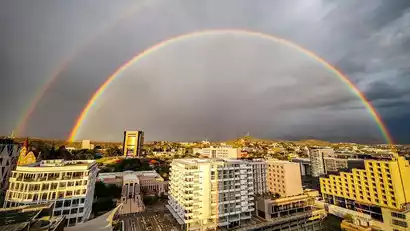
Day 9 Windhoek → Quiver Tree Manor
All day
We'll get up early this morning and drive to the Quiver Tree Estate in southern Namibia. The quiver tree, actually an aloe barbadensis tree, can reach 5-6 meters tall and gets its name from the fact that locals often hollow out the branches to use as quivers.
You can try to photograph the starry sky at night. Photographing the brilliant starry sky of Namibia with the quiver trees as the background is a very classic photography spot. British photographer Florian Breuer's famous work "Quaver Trees Under the Stars" was taken here.
Special Note 1: Starry sky photography is a complimentary service and is subject to weather conditions. If it is a full moon day, light painting photography will be arranged. Please note that there will be no refunds if you cannot participate due to weather or personal reasons.
Special Note 2: If there are no rooms in the park during the peak season, you will choose to stay in a hotel in the nearby area, but this will not affect the filming.
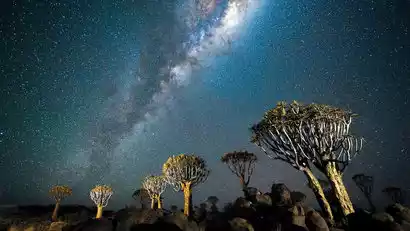
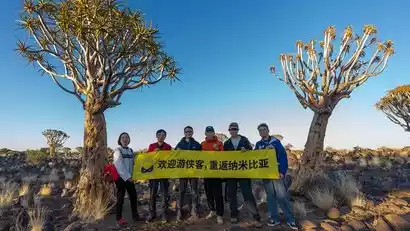
Day 10 Quiver Tree Manor → Cheetah Manor
All day
After breakfast at the hotel, you can choose to wake up early again to photograph the morning glow of the Quiver Tree. Then, you'll drive to Cheetah Manor for lunch, a journey that takes approximately 3-4 hours. After lunch, you'll be taken inside the park, where you can photograph cheetahs up close and personal, capturing precious moments. There's also a waterhole where you can wait for the animals to drink and take photos.
[Special Note] Activities such as taking photos with cheetahs have been cancelled throughout Namibia
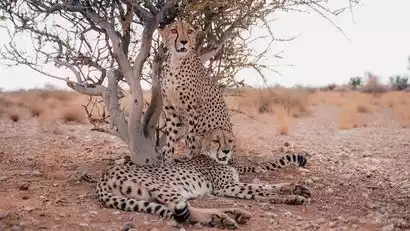
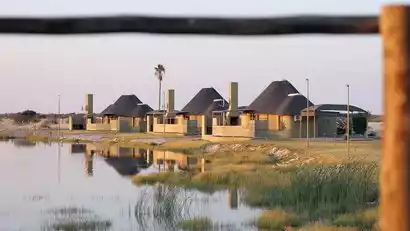
Day 11 Cheetah Manor → Sossusvlei Red Desert
All day
After breakfast, we'll depart for a photoshoot in the Sossusvlei Desert. Within the vast 54,000 square kilometers of the Namib Desert, the Sossusvlei Desert stands out as a striking sight. Its towering crimson dunes contrast beautifully with the blue sky and white clouds, creating a stunning photo opportunity that's sure to draw countless likes, no photo editing software needed.
I came to Dune 45 just in time for my creative endeavors. If the Sossusvlei Red Desert is the most striking feature of the Namib Desert, then Dune 45 is undoubtedly its most striking landmark. Dune 45 maintains a captivating S-shaped curve. Under the sun, the side facing the sun is a dazzling crimson, while the side facing away from the sun is a deep, solemn color. The two colors create a sharp contrast at the intersection of the ridges. Every curve, every flicker of light and shadow, is a fascinating subject for photographers.
Special note: According to the regulations of the Namibian government, tourist buses must enter the Red Desert National Park after sunrise and exit at sunset.
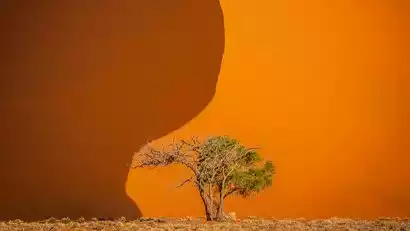
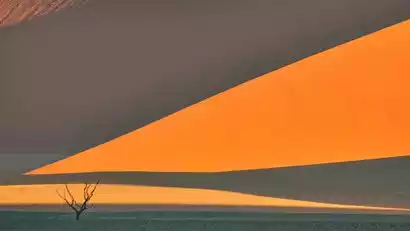
Day 12 Death Valley → Solitaire transfer → Whale Bay
All day
Rise early and transfer to a 4WD vehicle at the Red Desert Scenic Area to visit the Namib Desert's unique wonder of life, the Death Basin, where you can photograph its thousand-year-old trees. The Death Basin, a world-renowned natural heritage site, features lonely, century-old camel trees standing tall, a desolate and majestic sight. The remnants of former riverbed soil on the ground create a striking contrast with the layers of red sand dunes and blue sky, creating an unforgettable scene.
We'll then transfer to Whale Bay via Solitaire. Solitaire is a world of cacti and classic cars, nestled amidst the vast wilderness, where bizarre cacti grow and a variety of classic cars are scattered around. The unique African landscape exudes a strong Western vibe!
After a transfer, we arrived at Walvis Bay, a symphony of sand and sea. Half of Namibia's life is in the desert, and the other half is in the ocean. Walvis Bay, a port city in Namibia, is where the ocean meets the desert. A visit to Walvis Bay reveals the stark contrast between water and fire: on one side, the year-round desert, and on the other, the cold, surging ocean. The stark contrast will leave you marveling at the wonders of nature. Walvis Bay is also home to a large number of sea lions and a variety of seabirds, including pelicans and seagulls. If you're lucky, you might even encounter and photograph flamingos!
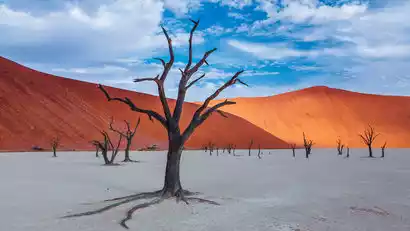
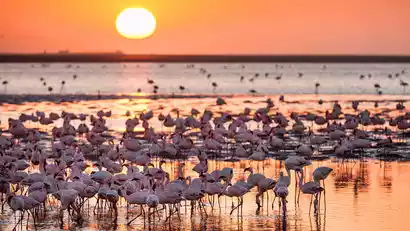
Day 13 Whale Bay (Whale Bay sailing + sand washing + flamingo painting)
All day
After breakfast, we set off for a spirited day of photography in Whale Bay! Snacks were provided throughout the trip, including fresh Namibian oysters, white wine, and soft drinks. The 100-square-kilometer natural harbor here was a haven for us, and as soon as we set sail, we were immediately surrounded by a vibrant array of marine life. Pelicans and seagulls might fly overhead, giving us plenty of opportunities to capture the action.
During the cruise, we'll see Pelican Point, home to the fur seals. They've been our friends for years and might even come to play on deck. July to October is the migration season for Humpback right whales, giving us the chance to see these remarkable creatures.
In the afternoon, we'll embark on another exciting excursion: Sandboarding at Whale Bay and Sandwich Bay. With the Atlantic Ocean on one side and the world's tallest sand dunes on the other, we'll capture the unparalleled spectacle of sand flowing into the sea! The desert reaches the ocean, and the ocean flows into the desert, creating a breathtaking symphony of sand and sea. Imagine speeding through the water in an off-road vehicle while taking in the action! Along the way, we'll pass a shallow beach, home to a flamingo habitat. We'll explore and photograph the beautiful flamingos before checking into our hotel for the night.
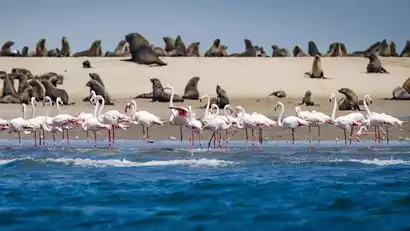
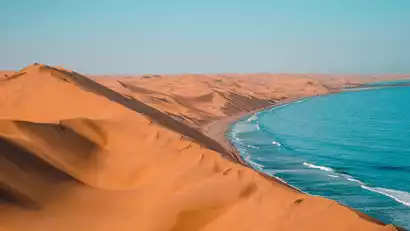
Day 14 Whale Bay → Mount Spitzkoppe
All day
After breakfast, we'll continue to the beach to photograph flamingos. We'll then drive to Spitzkoppe, a sacred mountain in Namibia. Resembling the world-famous Arch in the American West, Spitzkoppe boasts a large private reserve where you can hike, stargaze, and view Bushmen rock paintings.
This is also the local sacred mountain of love, and many people come here specifically to propose. If we are lucky, we can use the camera to record this romantic moment in front of the arch!
In the evening, we traveled to Mount Spitzkoppe to photograph the Southern Hemisphere's Arch starry sky. The dry air, comfortable temperature, and pitch-black surroundings gave us a chance to create under the night sky. As a UN-designated Gold-level dark sky reserve, the starry Milky Way here is sure to leave you with an unforgettable experience!
At night, you can camp in a tent in the Shenshan Scenic Area and spend the night. This is currently the only way to try to take pictures in the Shenshan Scenic Area.
Note: Star photography is a complimentary service and is subject to weather conditions. If it is a full moon day, light painting will be arranged. Please note that there will be no refunds if you cannot participate due to weather or personal reasons.
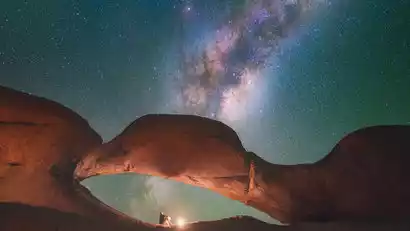
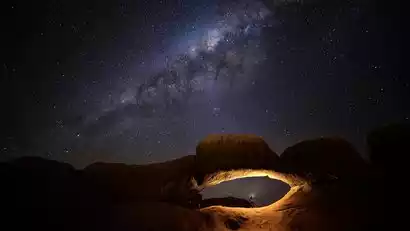
Day 15 Spitzkoppe Mountain → Red Clay Man Village → Windhoek
All day
Get up early to photograph the morning light of Mount Spitzkoppe, and after breakfast drive to the Red Clay Man Tribe for photography.
The Himba tribe, a remote African tribe, remains a pristine existence, maintaining a lifestyle dating back over 500 years. The Himba live in thatched huts in the jungle, with men herding and hunting outside while women tend to household chores and raise children. Ethnic cultural traditions evolve with the development of civilization, and some cultural phenomena eventually become part of history and disappear in reality. Perhaps in ten years, we'll only be able to see the Red Mud Tribe in recorded footage or at tourist attractions. Afterward, we'll travel to Windhoek and check into our hotel.
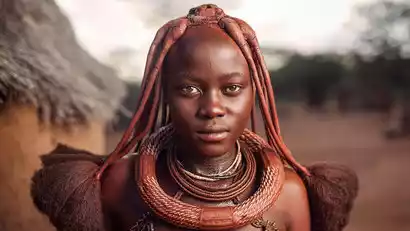
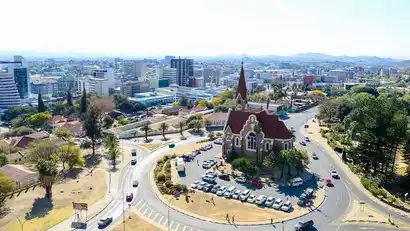
Day 16 Windhoek → Addis Ababa → Shanghai
All day
This morning, I'll have a good rest and drive to the airport in time to catch my international flight back to Shanghai (via Addis Ababa). This concludes my wild, exciting, and enjoyable photography trip through four countries in southern Africa.
Day 17 → Shanghai★Disbandment Day
All day
We're expected to arrive at Shanghai Pudong International Airport at 3:30 PM. The tourists will have a tearful goodbye! After you've finished your photos, be sure to post them on China-TravelNote Photography!






